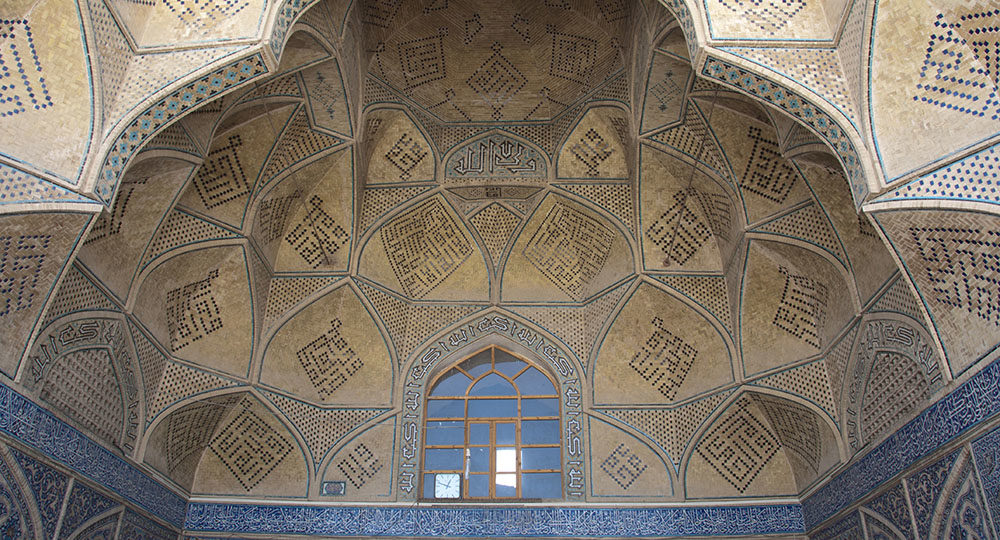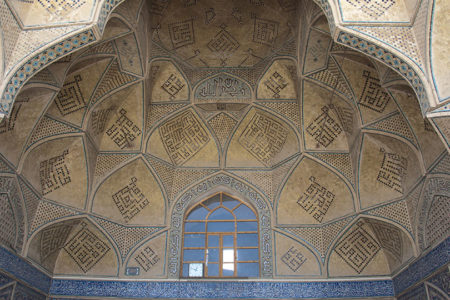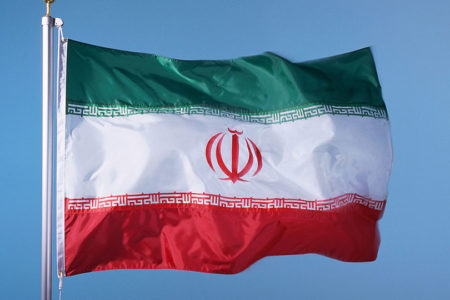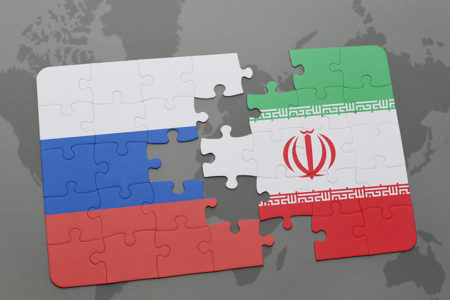The Doctrine of Mahdism
Editor’s Note: Many Westerners like to think religion plays no role in modern politics. However, belief in Islam’s messianic figure, called the Mahdi or Hidden Imam, drives the policies of Iranian President Mahmoud Ahmadinejad. Shi’ites believe the Mahdi will return, rule over a one-world system on Earth , and pour out judgment on all non-Muslims. This article explains the doctrine of Mahdism and shows how it affects the world.(Excerpted with permission of the Washington-based Middle East Media Research Institute [MEMRI]. © Copyright 2007 by The Middle East Media Research Institute [MEMRI]. All rights reserved.)
According to Shi’ite tradition, the Twelve Imams, descendants of the Prophet Muhammad’s cousin and son-in-law Ali Ibn Abi Talib, were endowed with divine qualities that enabled them to lead the Shi’ite believers and to function as Allah’s emissaries on earth. However, when the Twelfth Imam Muhammad Al-Mahdi1 disappeared in [A.D.] 941 CE, his connection with the Shi’ite believers was severed, and since then, the Shi’ites are commanded to await his return at any time.
In the meantime, Shi’ite senior clerics are considered to be the representatives of the Imams, and thus have the authority to handle the affairs of the Shi’ite community, mainly in the religious and judicial spheres, until the Hidden Imam returns to lead the Shi’ite community and deliver it from its suffering.
According to Shi’ite belief, during the period of the Mahdi’s absence (termed ghaibat or “occultation”), no one but God knows the hour of the Mahdi’s return, and no man can presume to foresee when this hour will come. Upon the Mahdi’s reappearance, all wrongs will be righted, divine justice will be instated, and the truth of Shi’ite Islam will be acknowledged by the entire world (Mahdism).2
Mahdism and the Islamic Regime in Iran
From the establishment of the Islamic Regime in 1979 to [Mahmoud] Ahmadinejad’s rise to power in August 2005, Mahdism had been a religious doctrine and a tradition that had no political manifestation. The political system operated independently of this messianic belief and of the anticipation of the return of the Mahdi. It was only with Ahmadinejad’s presidency that this religious doctrine has become a political philosophy and taken a central place in politics.
During the era of Ayatollah Ruhollah Khomeini, founder of Iran’s Islamic regime, Mahdism remained outside the political realm. However, Khomeini’s era was nonetheless characterized by messianic fervor. The Iranians attributed messianic qualities to him and conferred upon him the title of “Imam,” which until then had been reserved for the Twelve Imams. In fact, Khomeini’s rise to power was seen at the time as the realization of the prophecy regarding the Mahdi’s return.
Khomeini’s instatement of the Rule of the Jurisprudent (velayat-e faqih) in Iran prompted a transformation in Shi’ism, replacing its traditional passivity with a more active outlook. As part of this change, Khomeini stated that the Shi’ites must not just passively await the return of the Mahdi but must actively prepare the ground for his return and for the deliverance of the Shi’ite community. One component of this active approach was the taking of power by the clerics. However, Khomeini kept the doctrine of Mahdism at the periphery of the political sphere. He neither claimed to have a direct connection with God, nor presumed to foresee the hour of the Mahdi’s return.
After Khomeini’s death in 1989, Mahdism declined in Iran. The administrations of Ali Akbar Hashemi Rafsanjani (1989–1997) and Mohammad Khatami (1997–2005) maintained strict separation between politics and Mahdism—a policy that would change with Ahmadinejad’s presidency.3
This document reviews the politicization of Mahdism by Iranian President Mahmoud Ahmadinejad and by his spiritual mentor, Ayatollah Taqi Mesbah-e Yazdi.
Messianism in Iranian Foreign Policy
The messianic doctrine of Mahdism is also manifest in Iranian foreign policy, especially in its attitude toward the Western superpowers and towards the nuclear program. Ayatollah Mesbah-e Yazdi, mentor to Ahmadinejad, expressed this approach in an October 11, 2006, speech: “The greatest obligation of those awaiting the appearance of the Mahdi is fighting heresy and global arrogance [i.e. the West, primarily the U.S.].”4
Ahmadinejad’s speeches are characteristically derisive of the “forces of arrogance,” i.e., the West, primarily the U.S., and threatening towards anyone who does not accept Shi’ite messianism as an alternative to the “perdition and destruction” awaiting them: “Those who do not respond to the call to proceed toward the truth—a good destiny does not await them. I heard that the president of one of those countries [i.e. U.S. President George Bush]…said that Iran’s president was threatening him. I say to him, ‘I am not the one threatening you. It is the entire world that threatens you because the world in its entirety is steadfast against oppression and the oppressors. You [Western countries] are nothing compared to the might of God. We invite you to [take] the righteous path, the path of the Prophets, of monotheism and justice. If you believe that you can sit in your glass palaces and determine the fate of the world, you are mistaken….Our call [to you] to take the direction of truth [stems] from pity. We do not want you to get into trouble, since you know that the outcome of oppression and injustice is perdition and destruction.”5
These characteristics are also evident in Ahmadinejad’s nuclear policy. In contrast to Khatami’s government, which endeavored to soften the position of the West on the nuclear issue via ongoing dialogue, Ahmadinejad and his close circle do not avoid confronting the West, since they consider this struggle to be one of the ways to prepare the ground for the return of the Mahdi.
According to the Internet daily Rooz, “Some of those close to Ahmadinejad, who frequently speak [of the need] to prepare the ground for the Mahdi’s return, explicitly link the [fate of] the Iranian nuclear dossier to this need….According to reliable information, they stressed in various private meetings that the [Iranian] opposition to global pressure [on the Iranian nuclear program] and its insistence on the right to utilize nuclear power are among the ways to prepare the ground for the return of the [Hidden] Imam.”6
Mahdism in the Ideology of Ayatollah Mohammad Taqi Mesbah-e Yazdi
An address given at the International Seminar on the Doctrine of Mahdism by Ayatollah Mohammad Taqi Mesbah-e Yazdi shows that he, too, regards belief in the Mahdi as a concept that transcends the religious or theoretical realm. Ayatollah Yazdi gave this belief a tangible political-ideological dimension when he explained that the Mahdi’s return would lead to the establishment of a single rule over the entire world and that the present battle against the infidels and against “the global arrogance” is preparing the ground for, and hastening, the coming of the Mahdi: 7
“Implementing the laws of Islam, establishing justice and fighting heresy and oppression are the most important duties for those who await [the return of] the Hidden Imam and prepare the ground for his coming….We must enhance religious faith and [the power] of religion in Iran and in the entire world….In order to hasten the coming of the Hidden Imam, we must disseminate justice and religious law, in order to increase the public’s awareness of them [throughout the world] so that the [Shi’ite] faith will be accepted by society [everywhere]….
“One of the ideological aspects of the Mahdist doctrine is [its] universality, since the Mahdi comes to establish justice and righteousness in the entire world. Another aspect is the dissemination of justice and righteousness [under the rule of] a single man, a single center, and a single system. Since it is the Hidden Imam who is responsible for disseminating righteousness and justice, the world will need to have a single center and government…so that it will emerge from a state of [division] and establish a single [universal] rule headed by the [Hidden Imam], and every kind of oppression and exploitation will [then] vanish from the world.”
In a 2006 speech marking the Mahdi’s birthday, Ayatollah Mesbah-e Yazdi emphasized the importance of fighting heresy, which, in his opinion, is delaying the coming of the Mahdi: “Our noblest duty is to strive to reduce oppression, to be more [stringent] in our implementation of Islamic law …and to weaken the control of oppressive and tyrannical regimes over the oppressed. These [actions] can [hasten] the return of the Hidden Imam….If we wish to expedite the Mahdi’s coming, we must remove any obstacles [delaying his return]. What are the obstacles delaying the appearance of the Mahdi? [They are] the [heretical] denial of the blessing [conferred] on society by the presence of the Imam, [as well as] ingratitude, insubordination, and objections [to the doctrine of Mahdism]. If we want to hasten the coming of the Mahdi, we must eliminate these obstacles. We must strive to instate greater justice, ensure a [more stringent] implementation of Islamic law, [bring] the people to take greater interest in the faith and its directives, [establish] the religious laws as the dominant [values] of society, [ensure] that religious faith be taken as a consensus at conferences, and limit the [control of the oppressors, i.e. of the Western powers] over the oppressed throughout the world—both Muslim and non-Muslim. [This is what we must do] in order to prepare the ground for the Mahdi’s coming. Thus, the greatest obligation of those awaiting the appearance of the Mahdi is fighting heresy and global arrogance.”8
Fatemeh Rajabi, who is affiliated with Ansar-e Hizbullah and who authored a book about Ahmadinejad titled The Miracle of the Third Millennium, said that the “Ahmadinejad government [was established to facilitate] the coming of the Hidden Imam.”
ENDNOTES
- The Twelfth Imam, the Shi’ite messiah, is also called Muhammad Al-Muntazar (“the expected”), Imam Al-Zaman (“The Imam of the Age”) and “the Hidden Imam.”
- Sobh-e Sadeq (Iran), April 30, 2007.
- For details about Ahmadinejad’s rise to power and about the “Second Islamic Revolution,” see MEMRI Inquiry and Analysis No. 253, “The ‘Second Islamic Revolution’ in Iran: Power Struggle at the Top,” November 17, 2005 <memri.org/bin/articles.cgi?Page=archives&Area=ia&ID=IA25305>.
- Parto-ye Sokhan (Iran), October 11, 2006.
- ISNA (Iran), September 6, 2006 <http://www.isna.ir/Main/NewsView.aspx?ID=News784304&Lang=P>.
- Rooz, October 16, 2006, as cited by the Entekhab Website on October 16, 2006 <entekhab.ir/display/?ID=6760&page=1>.
- Kayhan (Iran), September 10, 2006.
- Parto-ye Sokhan (Iran), October 11, 2006.







